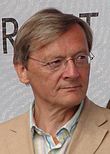Austrian legislative election, 2006
|
|
|||||||||||||||||||||||||||||||||||||||||||||||||||||||||||||||||||||||||||||||||||||||||
|---|---|---|---|---|---|---|---|---|---|---|---|---|---|---|---|---|---|---|---|---|---|---|---|---|---|---|---|---|---|---|---|---|---|---|---|---|---|---|---|---|---|---|---|---|---|---|---|---|---|---|---|---|---|---|---|---|---|---|---|---|---|---|---|---|---|---|---|---|---|---|---|---|---|---|---|---|---|---|---|---|---|---|---|---|---|---|---|---|---|
|
|||||||||||||||||||||||||||||||||||||||||||||||||||||||||||||||||||||||||||||||||||||||||
|
All 183 seats in the National Council 92 seats needed for a majority |
|||||||||||||||||||||||||||||||||||||||||||||||||||||||||||||||||||||||||||||||||||||||||
| Turnout | 4,793,780 (78.49%) | ||||||||||||||||||||||||||||||||||||||||||||||||||||||||||||||||||||||||||||||||||||||||
|
|||||||||||||||||||||||||||||||||||||||||||||||||||||||||||||||||||||||||||||||||||||||||
|
|||||||||||||||||||||||||||||||||||||||||||||||||||||||||||||||||||||||||||||||||||||||||
The 2006 general election for the National Council in Austria was held on 1 October 2006.
Following the Austrian legislative election, 1999, the Austrian People's Party (ÖVP) had formed a coalition government with the Austrian Freedom Party (FPÖ), and later the Alliance for the Future of Austria (BZÖ). As a result of the 2006 election, the ÖVP-BZÖ coalition lost their majority in parliament. After three months of negotiations, it was announced on January 8 that the SPÖ and ÖVP would form a grand coalition, with SPÖ leader Alfred Gusenbauer becoming the next Chancellor.
The Austrian People's Party contested the election with Chancellor Wolfgang Schüssel as its leader. It was the first federal election in Austria since 1970 the party entered as strongest party. Slogans used by the party in the campaign were "Secure. Austria" (Sicher. Österreich), "Austria. Here, we are well." (Österreich. Hier geht's uns gut.) and "Austria. Stays better." (Österreich. Bleibt besser.) They also attacked the Social Democratic Party, attesting them a lack of economic competence, repeatedly bringing up the so-called "BAWAG-Affair". The ÖVP cited a rising number of academics and shorter study periods, according to them because of the introduction of tuition fees, as some of their successes. They also capitalized on their women’s policies, including being the first Austrian cabinet with half the ministers being women and appointing a woman as president of the Supreme Court for the first time.
...
Wikipedia





